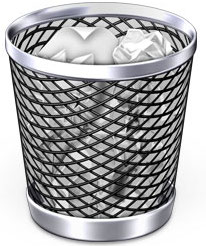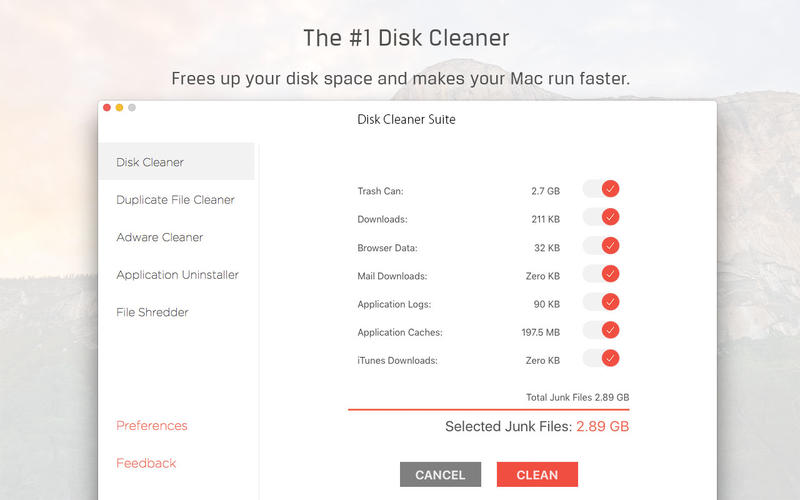

- #FASTER WAY TO SECURE EMPTY TRASH MAC HOW TO#
- #FASTER WAY TO SECURE EMPTY TRASH MAC MAC OS X#
- #FASTER WAY TO SECURE EMPTY TRASH MAC FREE#

#FASTER WAY TO SECURE EMPTY TRASH MAC MAC OS X#
Secure deletion is one of the many ways that the Mac OS X system makes it easy to secure your data in this age of identity theft. This can be done by clicking on Preferences… in the Finder, then clicking on the “Advanced” option. It opens and you’ll see something like this:Ĭlick on “Empty Securely” and you’ve removed anything recoverable from your disk.įinally, you might just want to do what I’ve done: set up your preferences to automatically make every delete a secure one. If you really want to delete the trash ‘securely’, go for it.Īnother way you can get to this if you don’t remember the menu option is to just click on the trash icon itself in the Dock. Notice the slightly different wording in the warning message.

You can see that right below the usual “Empty Trash…” is “Secure Empty Trash…”. The easiest way is to look at the options on the “Finder” menu:
#FASTER WAY TO SECURE EMPTY TRASH MAC HOW TO#
Let me go backwards and start by showing you how to securely delete what’s currently in your trash. A normal deletion, by contrast, simply frees up the pointer to the file contents, while leaving the actual contents untouched until another file overwrites it, which could happen in a few seconds or not for a week. Even if you dig around in the file system itself to find where the file was, the data’s gone. recoverable) deletion.įirst off, a secure deletion is one where the file system actually writes garbage over the existing contents of your file as part of teh deletion. Further, you can also just securely delete your trash when you have something particularly sensitive to delete, and otherwise leave it as a standard (e.g. Turns out that the Mac OS X system supports a very slick secure delete that can be easily enabled any time you feel like you might have snoops poking around your ex files, whether legitimately or not. I don’t really care what you’re deleting. Just open the program, choose Mail> Preferences from the menus at the top, and then click the “Accounts” tab.The Patriot Act requires me asking whether you want to securely delete files to prevent authorized law enforcement officials from their legal investigations? And hey, if you fine readers are wondering how you’d schedule trash-emptying within Apple Mail, it’s actually really easy there. That’s awesome, Outlook! I mean, I wish you’d left the scheduling in, but unfortunately, I can’t always get what I want. If the folder you’ve right-clicked on isn’t Trash or Junk, that “Empty Folder” command will switch to “Delete All” (since its messages will be moved to the Trash first instead of being immediately removed forever). …after which you’ll of course get another warning about what you’re going to do. As I mentioned, you can’t schedule this process, but to have it happen manually, what you’ll do is right- or Control-click on the folder in question within the sidebar and choose “Empty Folder”… Now, if you don’t wanna mess around with modifiers or shortcuts to just empty out a folder, Outlook does actually have a way to do that.
#FASTER WAY TO SECURE EMPTY TRASH MAC FREE#
That action will select everything in between the two items you clicked, and you’ll then be free to delete that stuff. And if what you want instead is to delete a big chunk of messages that are all together-everything from 2016, say-what you’ll do is click the first item, hold down Shift, and then scroll to and click the last item in the list. Once your selection is made, again you’ll press Delete on your keyboard or use the toolbar icon in Outlook. This works well if you want to select a few items that aren’t right next to each other, as I’ve done below. Be aware of that! Command ClickĪnyway, another thing you could do is hold down Command and click to select multiple emails within your chosen folder. …but if you choose to move forward, the folder will be cleared out. Note that you’ll get this warning if you remove items from Junk or Trash but not your other folders this is because deleting messages from those locations permanently removes them, so you won’t be able to recover anything. If you then press the Delete key on your keyboard or click the Delete icon on Outlook’s toolbar, you’ll get a warning…


 0 kommentar(er)
0 kommentar(er)
